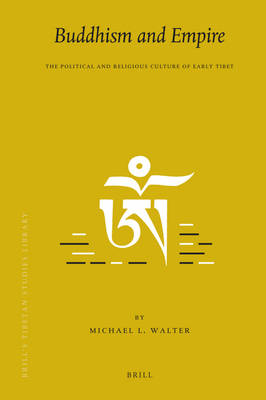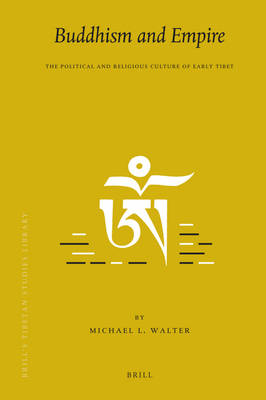
Je cadeautjes zeker op tijd in huis hebben voor de feestdagen? Kom langs in onze winkels en vind het perfecte geschenk!
- Afhalen na 1 uur in een winkel met voorraad
- Gratis thuislevering in België vanaf € 30
- Ruim aanbod met 7 miljoen producten
Je cadeautjes zeker op tijd in huis hebben voor de feestdagen? Kom langs in onze winkels en vind het perfecte geschenk!
- Afhalen na 1 uur in een winkel met voorraad
- Gratis thuislevering in België vanaf € 30
- Ruim aanbod met 7 miljoen producten
Zoeken
€ 314,45
+ 628 punten
Omschrijving
This book convincingly reassesses the role of political institutions in the introduction of Buddhism under the Tibetan Empire (c. 620-842), showing how relationships formed in the Imperial period underlie many of the unique characteristics of traditional Tibetan Buddhism. Taking original sources as a point of departure, the author persuasively argues that later sources hitherto used for the history of early Tibetan Buddhism in fact project later ideas backward, thus distorting our view of its enculturation.
Following the pattern of Buddhism's spread elsewhere in Asia, the early Tibetan imperial court realized how useful normative Buddhist concepts were.
This work clearly shows that, while some beliefs and practices per se changed after the Tibetan Empire, the model of socio-political-religious leadership developed in that earlier period survived its demise and still constitutes a significant element in contemporary Tibetan Buddhist religious culture.
Following the pattern of Buddhism's spread elsewhere in Asia, the early Tibetan imperial court realized how useful normative Buddhist concepts were.
This work clearly shows that, while some beliefs and practices per se changed after the Tibetan Empire, the model of socio-political-religious leadership developed in that earlier period survived its demise and still constitutes a significant element in contemporary Tibetan Buddhist religious culture.
Specificaties
Betrokkenen
- Auteur(s):
- Uitgeverij:
Inhoud
- Aantal bladzijden:
- 344
- Taal:
- Engels
- Reeks:
- Reeksnummer:
- nr. 22
Eigenschappen
- Productcode (EAN):
- 9789004175846
- Verschijningsdatum:
- 24/06/2009
- Uitvoering:
- Hardcover
- Formaat:
- Ongenaaid / garenloos gebonden
- Afmetingen:
- 160 mm x 241 mm
- Gewicht:
- 635 g

Alleen bij Standaard Boekhandel
+ 628 punten op je klantenkaart van Standaard Boekhandel
Beoordelingen
We publiceren alleen reviews die voldoen aan de voorwaarden voor reviews. Bekijk onze voorwaarden voor reviews.









